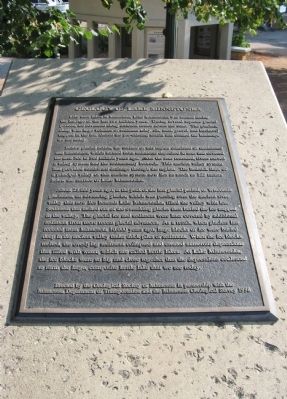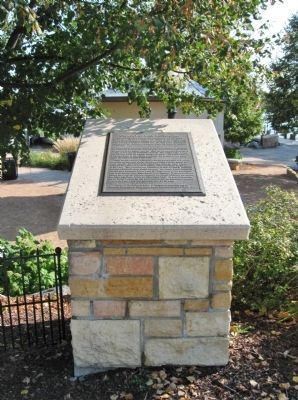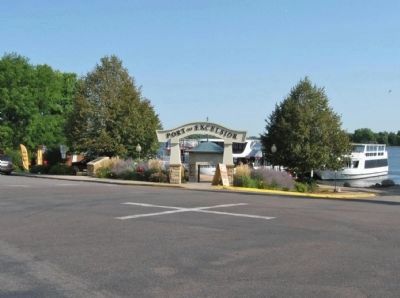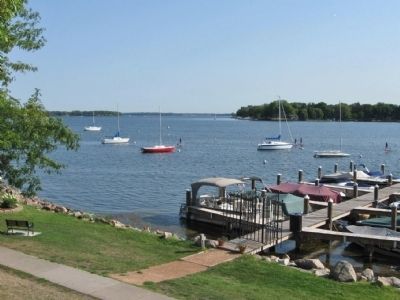Excelsior in Hennepin County, Minnesota — The American Midwest (Upper Plains)
Geology of Lake Minnetonka
Before glacial action, the surface of this region consisted of sandstones and limestones, which formed from sediments deposited in seas that covered the area 300 to 500 million years ago. After the seas retreated, rivers carved a valley system into the sedimentary bedrock. This ancient valley system had provided southward drainage through the region. The bedrock floor of a principal valley of that ancient system now lies as much as 122 meters below the surface of Lake Minnetonka.
About 25,000 years ago, at the peak of the last glacial period, or Wisconsin glaciation, an advancing glacier, which was passing over the ancient river valley that now lies beneath Lake Minnetonka, filled the valley with ice. Sediment that melted out of the overriding glacier then buried the ice trapped in the valley. The glacial ice and sediment were later covered by additional sediment from more recent glacial advances. As a result, when glaciers last receded from Minnesota 10,000 years ago, large blocks of ice were buried deep in the ancient valley under thick piles of sediment. When the ice blocks melted, the overlying sediment collapsed and created numerous depressions that filled with water, which are called kettle lakes. At Lake Minnetonka, the ice blocks were so big and close together that the depressions coalesced to form the large, composite kettle lake that we see today.
Minnesota Department of Transportation and the Minnesota Geological Survey 1998
Erected 1998 by the Geological Society of Minnesota in partnership with the Minnesota Department of Transportation and the Minnesota Geological Survey.
Topics and series. This historical marker is listed in this topic list: Natural Features. In addition, it is included in the Minnesota: Geological Society of Minnesota series list. A significant historical year for this entry is 1998.
Location. 44° 54.271′ N, 93° 33.916′ W. Marker is in Excelsior, Minnesota, in Hennepin County. Marker is at the intersection of Lake Street and Water Street, on the right when traveling north on Lake Street. Marker is at the Port of Excelsior. Touch for map. Marker is in this post office area: Excelsior MN 55331, United States of America. Touch for directions.
Other nearby markers. At least 8 other markers are within 6 miles of this marker, measured as the crow flies. In Honor of All Who Served and Those Who Died (approx. 0.2 miles away); Soldiers Memorial (approx. half a mile away); Peter M. Gideon (approx. 1.2 miles away); Peter M. Gideon and the Wealthy Apple (approx. 1.3 miles away); Christmas Lake (approx. 1.4 miles away); Welcome 2 Paisley Park (approx. 2.9 miles away); Wayzata Depot (approx. 5.1 miles away); Basketball Fever in Wayzata (approx. 5.2 miles away). Touch for a list and map of all markers in Excelsior.
Also see . . . Lake Minnetonka. Wikipedia entry. (Submitted on September 30, 2012.)
Credits. This page was last revised on June 7, 2021. It was originally submitted on September 30, 2012, by Keith L of Wisconsin Rapids, Wisconsin. This page has been viewed 3,166 times since then and 88 times this year. Photos: 1, 2, 3, 4, 5, 6. submitted on September 30, 2012, by Keith L of Wisconsin Rapids, Wisconsin.





